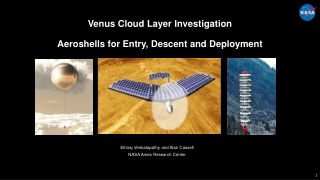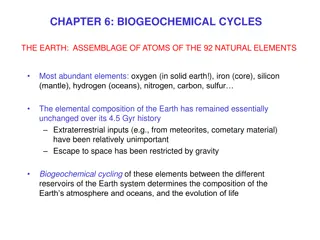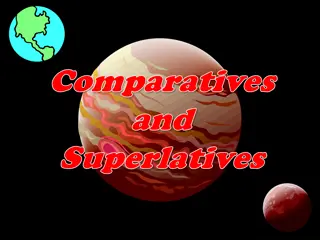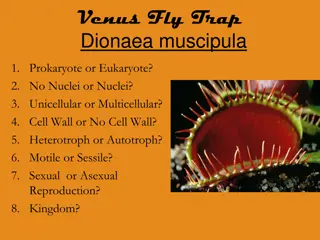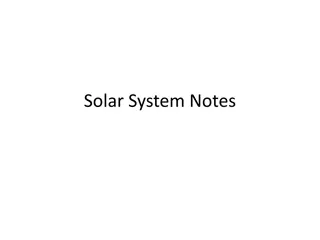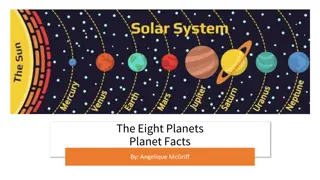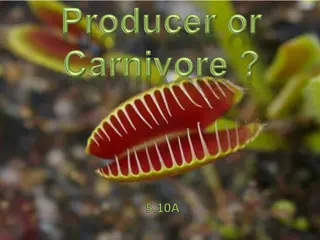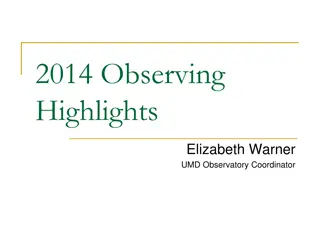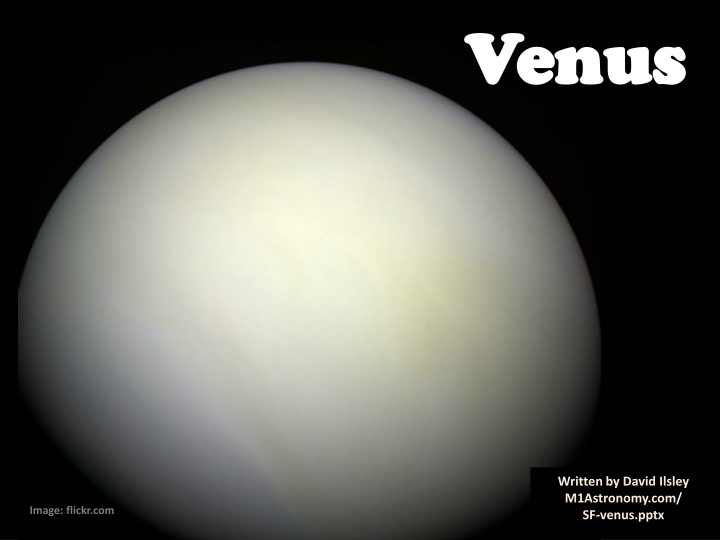
Fascinating Facts About Venus - The Bright Beauty
Venus, the second planet from the Sun, is known for its exceptional brightness in the night sky, often mistaken for UFOs. Referred to as the goddess of beauty and love due to its white appearance, contrasting Mars' red hue, Venus exhibits phases similar to the Moon when viewed from Earth. This intriguing planet orbits the Sun in a unique pattern, alternately appearing as a morning star and an evening star. Explore the enchanting characteristics and celestial dance of Venus in this informative content.
Download Presentation

Please find below an Image/Link to download the presentation.
The content on the website is provided AS IS for your information and personal use only. It may not be sold, licensed, or shared on other websites without obtaining consent from the author. If you encounter any issues during the download, it is possible that the publisher has removed the file from their server.
You are allowed to download the files provided on this website for personal or commercial use, subject to the condition that they are used lawfully. All files are the property of their respective owners.
The content on the website is provided AS IS for your information and personal use only. It may not be sold, licensed, or shared on other websites without obtaining consent from the author.
E N D
Presentation Transcript
Venus Venus Written by David Ilsley M1Astronomy.com/ SF-venus.pptx Image: flickr.com
Apart from the Sun and Moon, Venus is by far the brightest object in the night sky. It s magnitude ranges from 2.98 to 4.92 compared to 1.46 for Sirius, the brightest star. This means that, at its brightest, Venus is 24 times as bright as Sirius. Many reported UFO sightings have turned out to be Venus. Image: flickr.com
Venus is very white, unlike Mars which is noticeably red. For this reason, Venus has been the goddess of beauty and love in many cultures, whereas Mars was the god of war and other nasty things. Image: piqsels.com Image: Wikipedia Image: flickr.com
At 0.7 AU from the Sun, Venus is the second planet, after Mercury and before Earth. Its distance from the Earth varies considerably, which partly explains its large variation in brightness.
But it isnt at its brightest when its closest. This is because when it is closest it is between us and the Sun and we are then looking at its dark side.
Viewed from Earth, Venus has phases, just like the moon. 3 4 2 1 5 How Venus looks through binoculars or a telescope on Earth at each of positions 1 to 5. 1 2 3 4 5 It is brightest around position 2.
In general, when looking down from above the North Pole, everything in the solar system orbits and rotates in an anti- clockwise direction. 3 4 2 1 5 As Venus takes less time to orbit the Sun than Earth, it gets progressively further ahead of Earth passing through positions 1 to 5 in turn. While doing this, it rises in the morning before the Sun and is a morning star.
Then it passes through position 5 to 8 and back to 1. During those times it sets in the evening after the Sun and is an evening star. 5 1 8 6 7
45 Venus never gets more than about 45 from the Sun, however. So, it is never visible in the middle of the night (unless you live in the Arctic or Antarctic).
When it is a morning star, Venus moves gradually away from the Sun in our sky (and rises earlier) for a few months, then turns back and moves gradually closer to the Sun (and rises later). During this time, it gets mostly progressively dimmer.
When it is an evening star, Venus moves gradually away from the Sun in our sky (and sets later) for a few months, then turns back and moves gradually closer to the Sun (and sets earlier). During this time, it gets mostly brighter, except right at the end when it becomes a very thin crescent.
The morning star-evening star cycle takes 584 days (292 days as a morning star and 292 days as an evening star. 584 days is called the synodic period of the planet. The synodic period is the time to do one orbit relative to Earth, i.e. the time from one alignment to the next. The Catholic church has synods, but they don t have much to do with the synodic period of a planet. There is also the sidereal period which is 224 days. The sidereal period is the time for one orbit relative to the background stars which are not orbiting the Sun.
As we saw, looking down from the north, things in the solar system generally orbit and rotate anti-clockwise. Venus is an exception. Though it orbits the Sun in an anti- clockwise direction, it rotates in a clockwise direction once every 243 Earth days. This is actually longer than it takes to orbit the Sun at 224 Earth days. This makes the day length on Venus 117 Earth days.
Lets have a closer look at the planet itself. Through a telescope, Venus generally looks plain white. This is because it is always 100% covered by clouds. Before the first probes went there, it was thought that conditions under the clouds might be a more tropical and humid version of the wet tropics on Earth. It was even thought that there could be tropical vegetation and animal life. That idea was dispelled by the first probes.
It turns out that Venus is more like hell. The atmosphere is 92 times as thick as Earth s, meaning that the atmospheric pressure at the surface is 92 times as high as on Earth. It is about the same as it is a kilometre deep in Earth s oceans. Scuba divers can t go that deep. At ground level, the gases are compressed into a super- critical state, meaning that there is no distinction between liquid and gas. Image: Wikimedia Commons
The atmosphere is 96% carbon dioxide, 3% nitrogen and much of the rest is sulphur dioxide and carbon monoxide. The clouds are fine droplets of concentrated sulphuric acid, and it rains sulphuric acid, though the raindrop evaporate before reaching the ground. There is reasonable visibility under the clouds, though the views are distorted by refraction through the super-thick fluid atmosphere. Image: rawpixel.com
The carbon dioxide in the atmosphere produces an intense greenhouse effect, giving the planet an average surface temperature of 464 C and a surface temperature range from 438 C to 482 C. At that temperature, the ground would glow a dull red. Image: pxhere
Below is the first picture of the ground on Venus taken by Venera 13 in 1982. It shows basalt rock and soil. The craft lasted 2 hours on the surface before dying from the heat and pressure. Image: picryl.com
Here is a better view of the scenery taken by a later craft. The sky is black because it is taken in false colour. Image: Wikimedia Commons The surface of Venus seems to be all volcanic rocks of basaltic composition. In fact, there is quite a bit of evidence that it is still volcanically active.
Venus has an internal structure similar to Earth. There is a thin volcanic crust, then a silicate rocky mantle, then an iron core. Image: Wikipedia However, it doesn t seem to undergo plate tectonics. Instead, there is evidence of periodic re-surfacing by planet-wide volcanic activity, the last such event taking place about 200 million years ago.
Earth has a magnetic field produced by currents in its liquid outer iron core. The currents are produced by convection and are re-directed by the rotation of the Earth. Image: Wikimedia Commons Venus doesn t have such a magnetic field. The very slow rotation could be the cause, but calculations suggest than even at the speed Venus rotates, there should be a magnetic field if there is a significant liquid part to the core.
Another possible reason is that the core is completely solidified. But as Venus is very similar in size and composition to the Earth and as its surface is very much hotter than Earth s, this seems unlikely. Image: Wikipedia
Yet another possibility is that the core is completely liquid. Crystallisation at the boundary of the solid and liquid parts of the core on Earth releases latent heat which drives core convection. If Venus core is not yet solidifying, then this source of heat would be absent. This combined with the slow rotation could possibly explain the absence of a magnetic field. Image: Wikipedia
One final thing: Venus can be seen quite easily in broad daylight. But, finding it in the sky is difficult unless you know where to look. The best way is to get up before sunrise when Venus is a morning star, then find a pole or lamp pole and stand where Venus appears to be just above the top of the pole. As it moves in the sky, adjust your position to keep it at the top of the pole. You will be able to do this well into the daytime even with the sun shining. Image: flickr.com
The End The End Image: flickr.com

